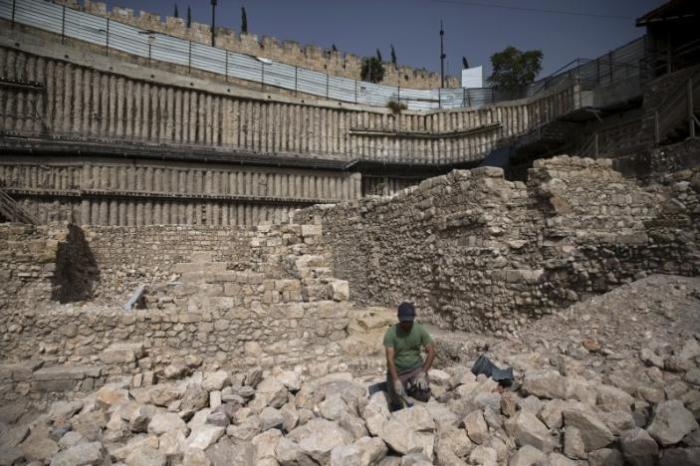Mystery Surrounds Human Remains Found at 3,200-Y-O Biblical Canaanite Site

The human remains of an adult and a child were discovered at the biblical site of Gezer in Israel. The two are believed to have been killed some 3,200 years ago as a blazing Canaanite building collapsed.
Haaretz reported on Sunday that the victims were burned under ash and mud-brick debris, and were found in a room not far from a seal depicting the gazelle-headed Levantine god Reshef.
Archaeologists say that the discovery confirms accounts by Egyptian Pharaoh Merneptah that he seized Gezer, laying siege to the ancient Canaanite city, destroying many of its buildings in a campaign to establish control.
The building containing the remains of the adult and the child was found in the north part of the ancient city, where it once stretched 20 by 15 meters, and contained several different rooms.
Researchers say that the debris inside the building reveals that the fire was so intense that it caused the ceiling of one of the rooms to collapse, which buried the victims in a meter-thick layer of ash and burnt bricks.
Mystery surrounds the identity, and even the sex of the victims, however, as they were very badly burned. It is also not known what they were doing inside the building at the time of the attack.
"The adult was lying on its back with arms above its head. The child, who was wearing earrings, was next to the adult, to the left. This room was filled with ash and collapsed mud brick," Steve Ortiz of the Tandy Institute for Archaeology at Southwestern Baptist Theological Seminary said.
Ortiz, who is the director of the Tel Gezer Project, added:
"We can only guess what they were doing in the building on the eve of destruction. Were they hiding? Were they fleeing the Egyptian soldiers? Did they go back into the building to retrieve valuables?"
Archaeologists suggested that the room where the human remains were found had been a workshop, given the table, rooking stone, large grinding stone, several storage jars and a large pithoi discovered.
Another body of an adult was found in a second room beneath a jumble of collapsed stones.
"This individual attests to the violent nature of the destruction, as it is clear he experienced the trauma of the event," Ortiz noted.
The second room also held a cylinder seal showing a war scene commanded by the Levantine god Reshef, who had been depicted with a gazelle head. Reshef was later worshiped by the Egyptians during the New Kingdom era, around 1550 B.C. to 712 B.C.
"The scene depicts Reshef drawing his bow toward twelve enemies in varying degrees of collapse, and two kneeling, bound captives. Some have pointed beards, a feature typical of Asiatics in Egyptian iconography," the article stated.
Ortiz noted that all the artifacts and human remains from the building have been relocated to a research lab in Jerusalem, where further post-excavation analysis will be carried out.
A number of significant discoveries concerning the Canaanites have been made in recent years.
Archaeologists said in March 2016 that they found a 4,200-year-old Canaanite burial ground near Bethlehem, though excavators noted that many of the tombs had been destroyed by looters.
"The finds confirm that there was a Canaanite town in Bethlehem. This had ... never been proven before," Lorenzo Nigro, an Italian professor leading the excavation, said at the time.





























